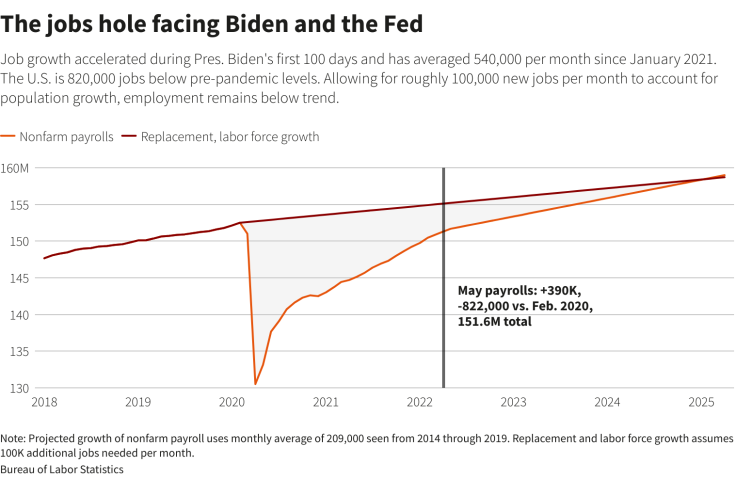Jobs Blowout Means More Pressure For Fed
Another blowout jobs number and continued wage growth will likely stiffen resolve at the Federal Reserve for another three-quarter point rate increase at the central bank's July meeting, as the welcome news of a still strong job market clashes with concern that it will have to cool ease inflation.
U.S. firms added 372,000 jobs in June, a far larger number than expected that pushed private employment back above its pre-pandemic level and kept the unemployment rate at an ultra-low 3.6%.
Wages continuted to rise at a 5.1% annual rate, only slightly lower than the prior month.
While that is likely to cool speculation of an impending recession, it could fuel uncertainty about whether the Fed will need to become more aggressive in its use of higher interest rates to cool the economy and bring consumer inflation down from the current 40-year high of more than 8%.
"I am fully supportive of moving 75 basis points," at the July meeting, Atlanta Fed president Raphael Bostic said on CNBC. "This report just reaffirms that the economy is strong and that there is still a lot of momentum in the labor market and that is a good thing."
Bostic said he was taking a "wait and see" attitude about further rate hikes as he parses signs that the economy may be slowing overall against upcoming inflation and jobs reports - a debate that will frame what the Fed does beyond its July meeting.
Several Fed officials have now endorsed a three-quarter point increase at the July session, but have left open using further large hikes if inflation does not clearly turn lower.
For that to happen central bank officials feel the labor market will also have to cool, and so far it has shown little evidence of doing so. Job openings data for May showed there are still nearly 2 openings for each unemployed person.
GRAPHIC: The jobs hole facing Biden and the Fed

Traders bet on bigger Fed rate hikes after the report, with interest-rate futures contracts now even reflecting a small chance the Fed raises rates by a full percentage point in July. Rate futures contracts now reflect a base case view the Fed's policy rate will be in the 3.5%-3.75% range by year end, higher than Fed policymakers themselves predicted just three weeks ago.
"This calls into question...the narratiave that recession is imminent," said Nela Richardson, chief economist for payrll processor ADP. "This is a bonus for the Fed. They can be aggressive."
© Copyright Thomson Reuters 2024. All rights reserved.







